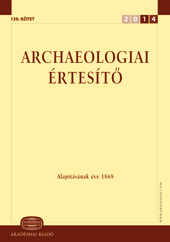DIE AULA PALATINA AUS DEM 4. JAHRHUNDERT IN SAVARIA (REVISION UND AUFGABEN)
The Aula Palatina in the Savaria in the 4th centuries
Author(s): Isztin Gyula, Tárczy Tamás, Endre TóthSubject(s): History, Archaeology, Architecture, Ancient World
Published by: Akadémiai Kiadó
Keywords: Roman Age; Pannonia; Savaria; palace; mosaic floor; imperial representation;
Summary/Abstract: The western part of a Late Roman palace, including a large, undivided hall, was excavated in Szombathely between 1938 and 1943. The floor of the apsidal hall was lavishly decorated with mosaics, while the wall footings were covered with colourful marble slabs. The construction of the palace was no doubt begun in consequence of the administrative changes during the Tetrarchy, when Savaria became the seat of the praeses. The architectural history of the palace suggests that the mosaic floor could not have been made before the 350s. It seems likely that the hall had been constructed as part of the preparations for Valentinian I’s visit to Savaria (374–375). However, only the excavation of the successive levels of the mosaic floor and the assessment of the finds can provide a more accurate date.
Journal: Archaeologiai Értesítő
- Issue Year: 139/2014
- Issue No: 1
- Page Range: 137-155
- Page Count: 19
- Language: German
- Content File-PDF

